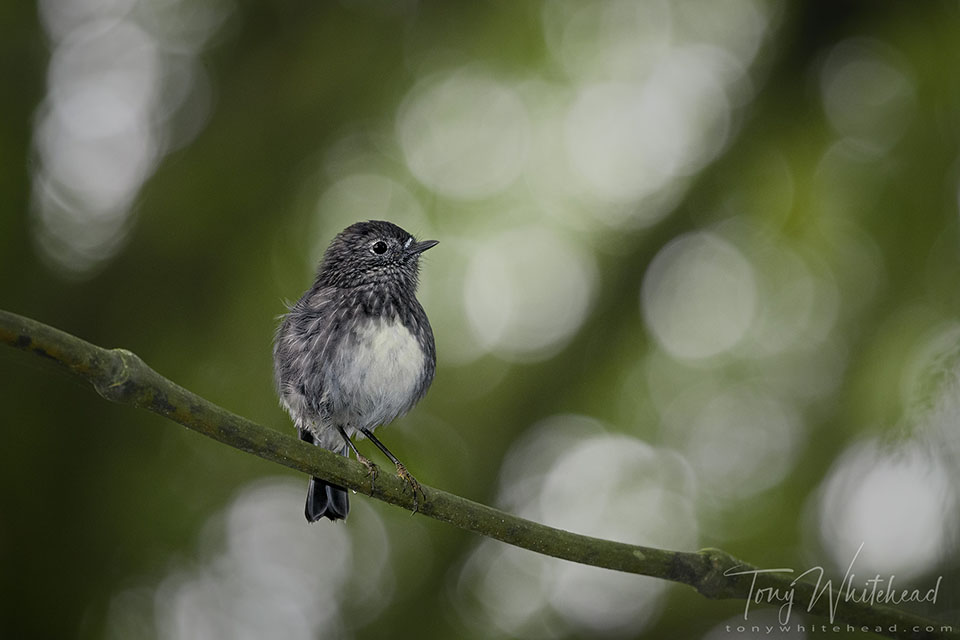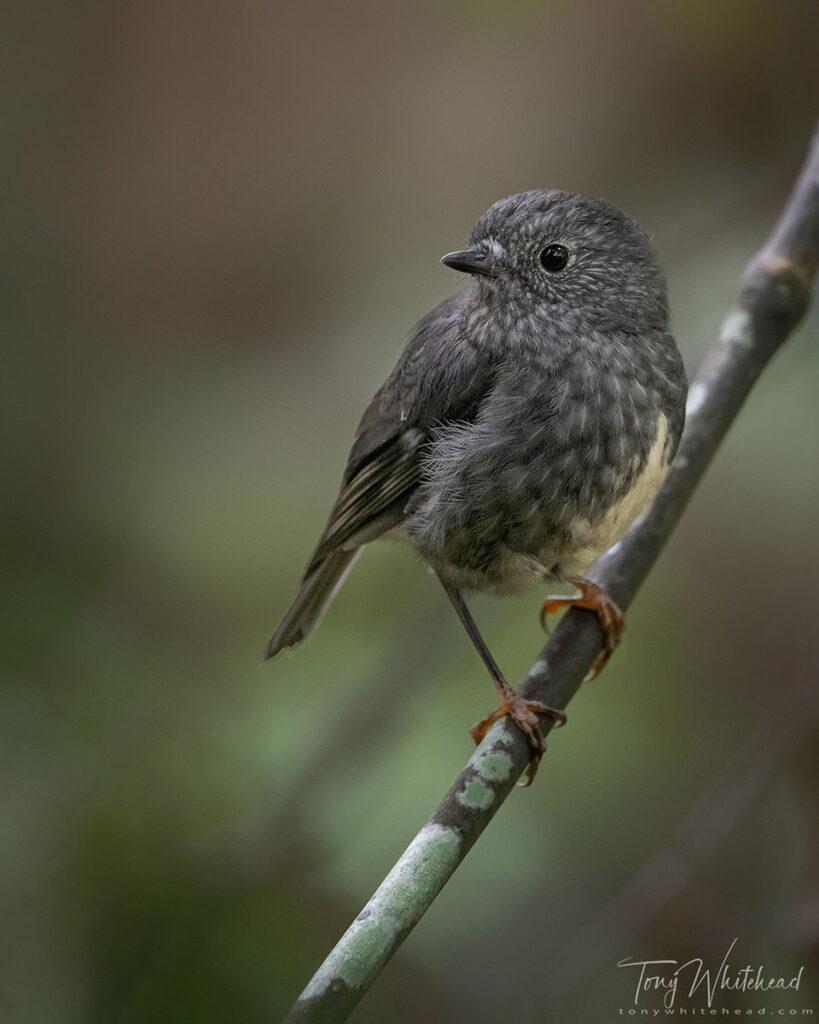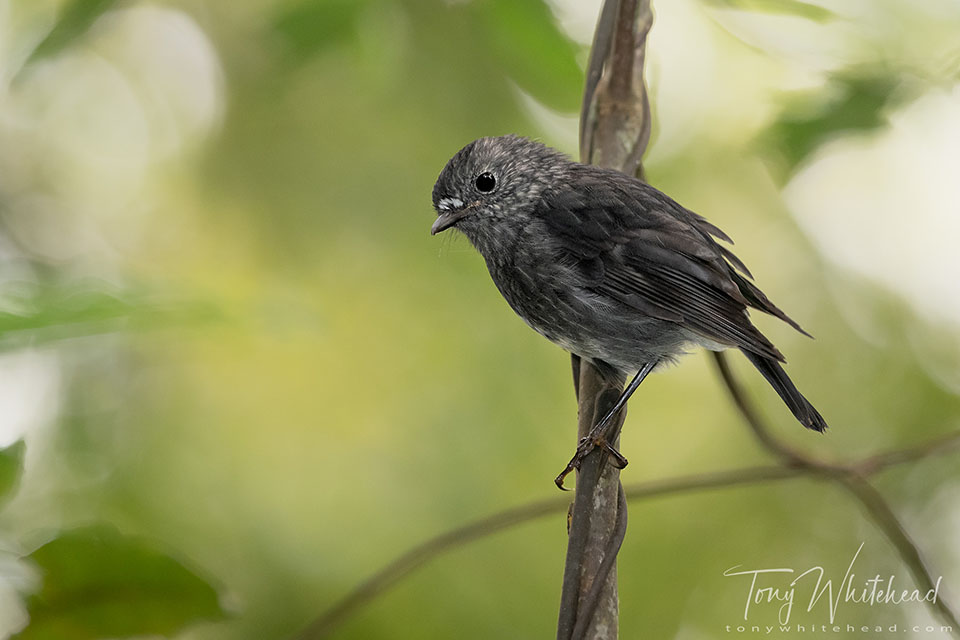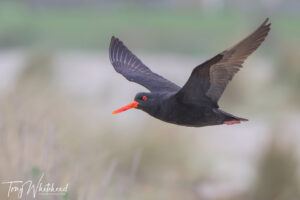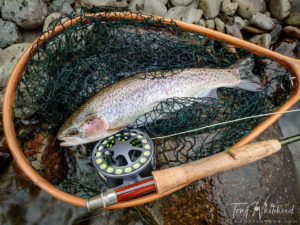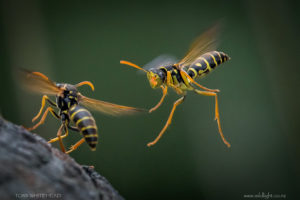After 5 weeks of macro posts, regular readers of my blog may feel I have lost the plot and abandoned my beloved birds. While I am really enjoying the macro learning curve and extra opportunities it opens up, I have not entirely neglected the diurnal creatures that prey on my nocturnal subjects.
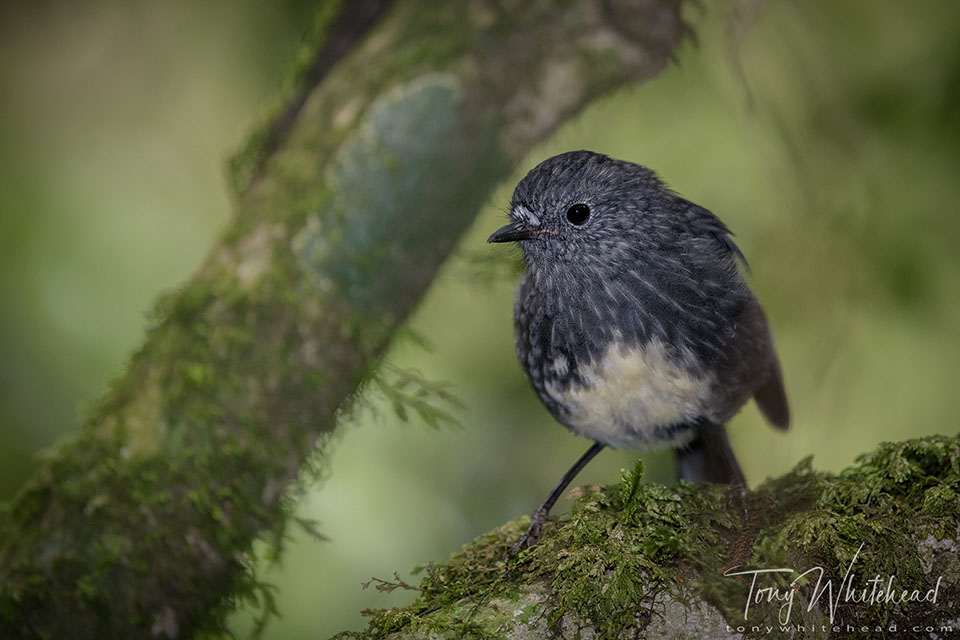
A recent exploration in search of inspiration for an image to print as a gift led me on a hunt for local North Island Robins. While trapping in the forest across the road has increased the presence of robins there they are not numerous enough to give a degree of confidence in locating a co-operative individual yet. A short drive gave the opportunity to explore a more established and populated habitat.
Being forest birds the challenge is dealing with low light levels and always raises the question – to flash or not to flash? Modern cameras with excellent high ISO performance and dynamic range give us more choice than in the past and decent images can be achieved with or without adding extra light. While flash can add to an image it can just as easily destroy it.
The above image shows a robin on supplejack in ambient light. 99% of my bird photography is in manual mode and this is again important in bush scenarios where variations in background brightness can result in inaccurate exposure of the subject. Having said that, if the light is uniform with no brighter areas in the background, automatic modes can work well in the bush and it is one of the few situations where I will occasionally change to aperture priority auto.
Adding flash to the equation can lift the image, add a bit of life to the bird and bring it forward in the image. The thing to avoid is an overly “flashed” image that makes the flash look obvious. You want to keep the expoure correct to show the surroundings and just add a small puff of light to illuminate the bird. Back in the days of film I found TTL flash with -1.7 stops of exposure compensation a reliable balance and it still seems to work very well in most cases. Nowadays with image preview it is easy to adjust settings to achieve exactly what you need.
The above image was shot with exactly the same settings but with -1.7 stops of fill flash providing some added detail under the chin and on the belly, leg and perch. An automatic exposure mode would have increased shutter speed due to the brighter background and underexposed the robin. To my eye this light shows the bird well and isn’t obviously flashed.
The top 2 images in this post were shot with flash as well. To me they look balanced and don’t obviously draw attention to flash having been used. Fully automated exposure and flash modes will often leave a very dark background and brightly lit subject making the flash very obvious and overwhelming.
Photos with Nikon D850, Nikon 300mm f4PF lens and SB 900 flash. The 300mm f4 lens is my all time favourite for bush birds. Small and light, bitingly sharp and creating beautiful out of focus backgrounds as the first photo shows with a feathered blob amongst the bokeh balls of the forest canopy.
